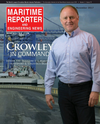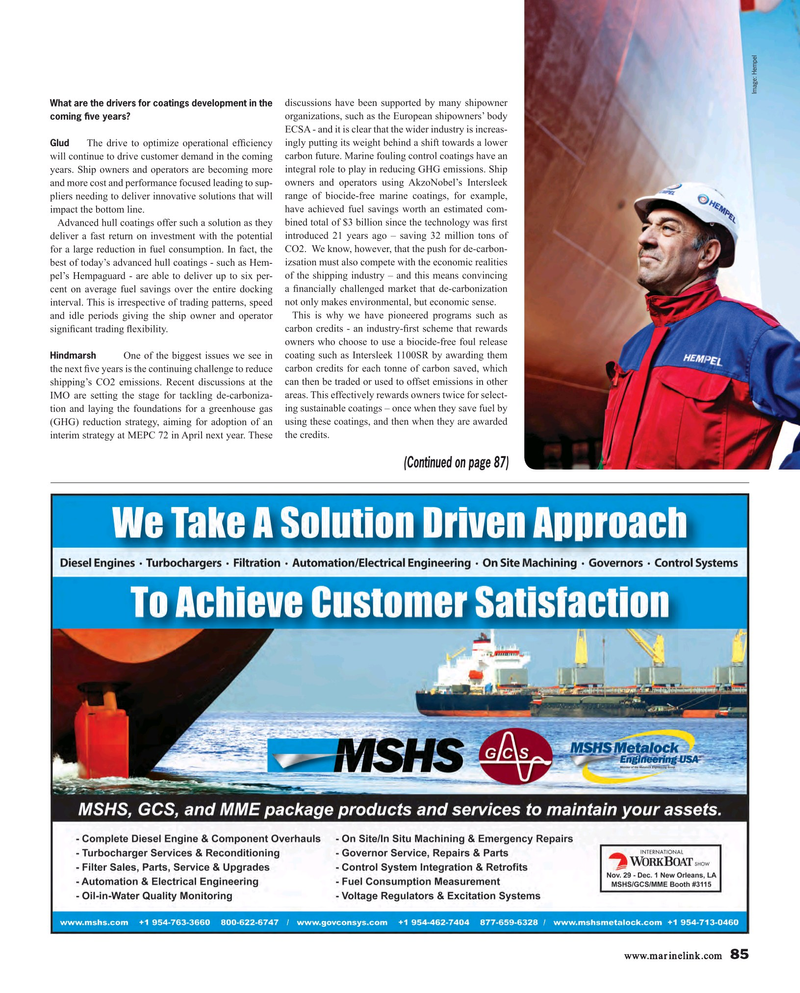
Page 85: of Maritime Reporter Magazine (November 2017)
The Workboat Edition
Read this page in Pdf, Flash or Html5 edition of November 2017 Maritime Reporter Magazine
Image: Hempel discussions have been supported by many shipowner
What are the drivers for coatings development in the organizations, such as the European shipowners’ body coming ? ve years?
ECSA - and it is clear that the wider industry is increas-
Glud The drive to optimize operational ef? ciency ingly putting its weight behind a shift towards a lower will continue to drive customer demand in the coming carbon future. Marine fouling control coatings have an years. Ship owners and operators are becoming more integral role to play in reducing GHG emissions. Ship and more cost and performance focused leading to sup- owners and operators using AkzoNobel’s Intersleek pliers needing to deliver innovative solutions that will range of biocide-free marine coatings, for example, impact the bottom line. have achieved fuel savings worth an estimated com-
Advanced hull coatings offer such a solution as they bined total of $3 billion since the technology was ? rst deliver a fast return on investment with the potential introduced 21 years ago – saving 32 million tons of for a large reduction in fuel consumption. In fact, the CO2. We know, however, that the push for de-carbon- best of today’s advanced hull coatings - such as Hem- izsation must also compete with the economic realities pel’s Hempaguard - are able to deliver up to six per- of the shipping industry – and this means convincing cent on average fuel savings over the entire docking a ? nancially challenged market that de-carbonization interval. This is irrespective of trading patterns, speed not only makes environmental, but economic sense.
and idle periods giving the ship owner and operator This is why we have pioneered programs such as signi? cant trading ? exibility. carbon credits - an industry-? rst scheme that rewards owners who choose to use a biocide-free foul release
Hindmarsh One of the biggest issues we see in coating such as Intersleek 1100SR by awarding them the next ? ve years is the continuing challenge to reduce carbon credits for each tonne of carbon saved, which shipping’s CO2 emissions. Recent discussions at the can then be traded or used to offset emissions in other
IMO are setting the stage for tackling de-carboniza- areas. This effectively rewards owners twice for select- tion and laying the foundations for a greenhouse gas ing sustainable coatings – once when they save fuel by (GHG) reduction strategy, aiming for adoption of an using these coatings, and then when they are awarded interim strategy at MEPC 72 in April next year. These the credits.
(Continued on page 87) www.marinelink.com 85
MR #11 (82-89).indd 85 MR #11 (82-89).indd 85 11/6/2017 3:44:36 PM11/6/2017 3:44:36 PM

 84
84

 86
86
